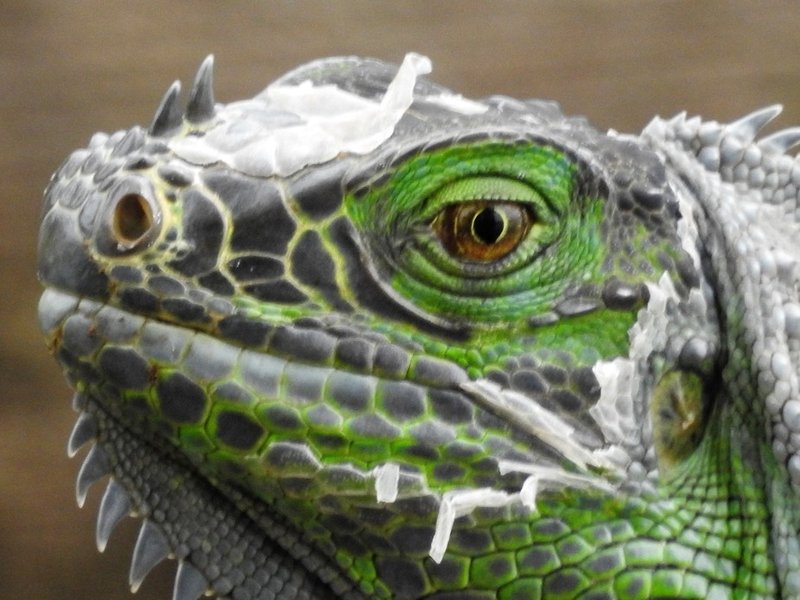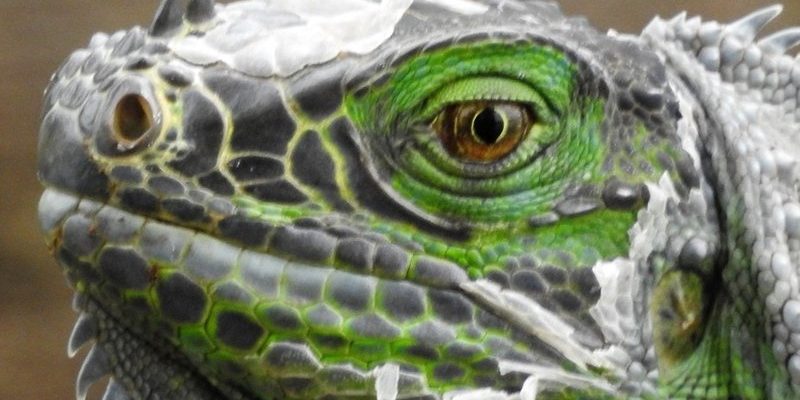
First off, shedding isn’t a sign that something’s wrong. It’s a healthy part of being an iguana, just like a snake or even a person who gets a haircut now and then. But understanding how this process works and why it matters can help you provide the best care for your iguana friend. Trust me, knowing a bit about iguana shedding can save you from a lot of confusion—and keep your pet feeling comfortable and happy.
Why Do Iguanas Shed?
You might be wondering, “Why in the world do iguanas shed their skin?” Great question! Shedding is primarily about growth. As iguanas grow, their skin doesn’t stretch like ours. Instead, it becomes tight and constraining. When that happens, the iguana needs to shed its old skin to allow room for its growing body.
This process can also help remove parasites or old skin that might be harboring bacteria. Think of it as a spring cleaning: it’s an opportunity for your iguana to refresh its skin and stay healthy. Generally, young iguanas will shed more frequently than adults, as they’re growing at a faster rate. So if you notice your baby iguana shedding a lot, that’s normal!
How Often Do Iguanas Shed?
The frequency of shedding varies based on a few factors, including age, health, and environmental conditions. Young iguanas might shed every couple of weeks, while adults typically shed every few months. Here’s a quick breakdown:
- Hatchlings: Every 2 to 4 weeks
- Juvenile Iguanas: Every month or so
- Adult Iguanas: Every 3 to 4 months
If your iguana isn’t shedding regularly, it could be a sign that something’s off—like inadequate humidity or lighting in its habitat. Iguanas require a good balance of heat and humidity to ensure healthy shedding, so keeping their environment in check is key.
What to Expect When Your Iguana is Shedding
When it’s shedding time, you might notice a few things. First, your iguana may become a bit grumpy or reclusive. It’s not uncommon for them to hide away during this process. Shedding can be uncomfortable, just like how you might feel a bit cranky when trying to squeeze into tight jeans.
You’ll also see skin flaking off in patches, often around the foot pads and tail. Sometimes, old skin may cling stubbornly. If you notice any stuck skin, particularly around the eyes, it’s essential to help your iguana. Using a soft, damp cloth can gently assist in loosening any stubborn patches. Just make sure you go slow and be gentle!
How to Help Your Iguana During Shedding
Caring for your iguana during shedding is mostly about making its environment comfortable. Here are some tips to ensure a smooth shedding experience:
- Humidity: Increase humidity in the enclosure. A humidity level of 65-75% is ideal. You can achieve this by misting the enclosure regularly or using a humidifier.
- Heat: Make sure the basking area is warm enough (around 90-95°F). Proper temperature helps with shedding, as it aids in softening the skin.
- Hydration: Ensure your iguana has access to fresh water. Staying hydrated is important for healthy skin and shedding.
- Diet: A balanced diet with plenty of leafy greens and occasional fruits supports overall health, which can make shedding easier.
You might also want to set up a shedding box, which is simply a small area filled with wet moss or paper towels. This gives your iguana a soft place to go when it’s time to shed. Just remember to check in on them regularly; you want to make sure everything’s going smoothly.
Signs of Shedding Problems
While shedding is normal, there can be complications. If your iguana has trouble shedding, it might lead to issues like retained skin or shed stuck around the eyes, toes, or tail. Here’s what to watch for:
– Retained Skin: If skin doesn’t come off after a couple of shedding cycles, it can cause health problems.
– Redness or Irritation: If you spot swelling or redness under the scales, something might be wrong, and it would be best to consult a vet.
– Behavior Changes: A sudden shift in your iguana’s behavior, like excessive hiding or puffing up, can signal discomfort.
If you notice any of these issues, reach out to a veterinarian who specializes in reptiles. It’s always better to be safe and get your pet the care it needs.
Understanding iguana shedding is all about ensuring your scaly friend stays healthy and comfortable. By keeping an eye on the environment, providing proper care, and recognizing the signs of shedding problems, you can make this process a breeze for both you and your iguana. Remember, shedding is just a part of growing up for iguanas, and with a little patience and care, you’ll both come through it just fine. So the next time you see your iguana sporting some new skin, you can smile, knowing it’s all part of the journey!

